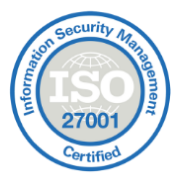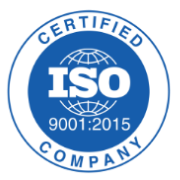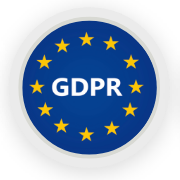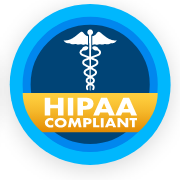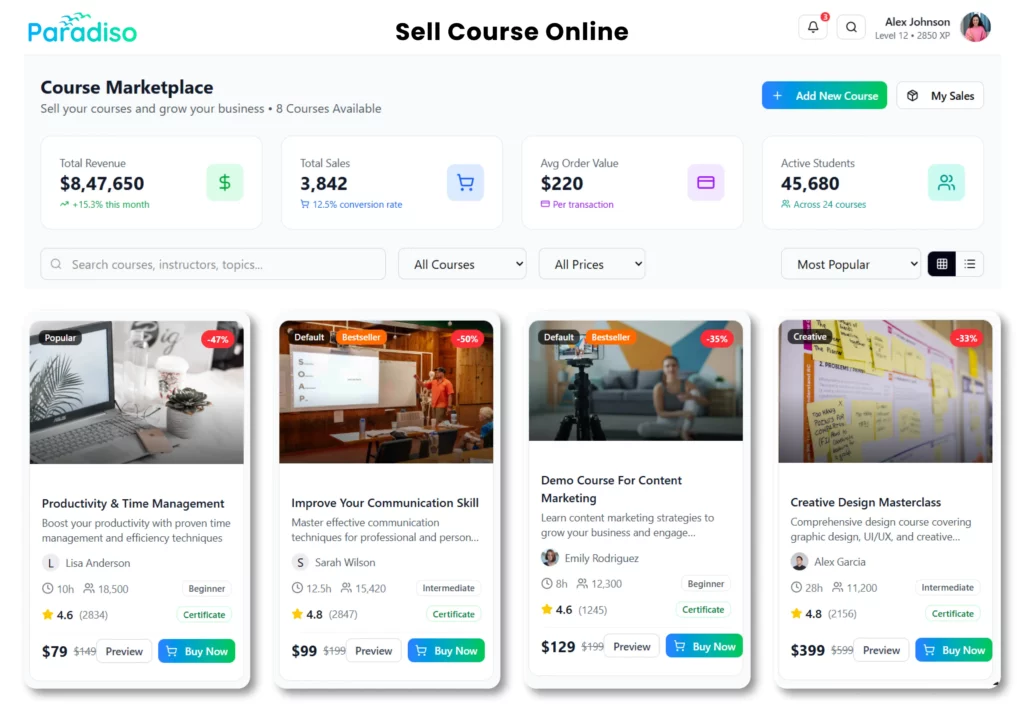Explore 15 most powerful LMS integrations that enable streamlined learning
Video Conferencing Integration
Bringing learners and instructors together in a virtual classroom is made effortless with video conferencing integration. Platforms like Zoom, Microsoft Teams, or Google Meet seamlessly integrate with LMS, enabling live interactions, real-time collaboration, and remote teaching. From conducting virtual lectures to hosting webinars, video conferencing integration bridges the gap between distance learning and meaningful engagement.
E-commerce and Payments Integration
Monetizing your e-learning courses becomes seamless with LMS integrations with e-commerce and payment gateways like Shopify, WooCommerce, or PayPal. This integration allows you to sell courses online, subscriptions, and digital products directly through your LMS, enabling effortless enrollment, secure transactions, and automated access provisioning upon payment.
E-Learning Content Authoring Integration
Creating engaging and interactive learning content is made effortless with LMS integrations with e-learning content authoring tools like Paradiso Composer, Articulate 360, Adobe Captivate, or Lectora. These integrations empower educators to design multimedia-rich courses, interactive simulations, and gamified learning experiences, enhancing learner engagement and knowledge retention.
Human Resources (HR) and Human Capital Management (HCM) Integration
Streamlining employee onboarding, training, and performance management is made efficient with LMS integrations with HR and HCM platforms like Workday, SAP SuccessFactors, or BambooHR. This integration enables seamless data synchronization between LMS and HR systems, automating learner enrollment, competency mapping, and reporting while ensuring compliance and streamlining workforce development.
Learning Analytics Integration
Tracking and analyzing learner data is crucial for personalized learning experiences and performance assessment. LMS integrations with learning analytics tools like Moodle Analytics, Blackboard Analytics, or Brightspace Insights provide actionable insights into learner progress, engagement levels, and areas of improvement. Leveraging learning analytics helps educators optimize their teaching strategies and tailor instruction to meet individual learner needs.
Content Management System (CMS) Integration
Streamlining content management is vital for efficient learning experiences. LMS integrations with CMS platforms like WordPress, Drupal, or Joomla enable educators to upload, organize, and share learning resources seamlessly. CMS integration facilitates version control, easy content updates, and centralized access to course materials, ensuring a smooth learning journey.
Single Sign-On (SSO) Integration
Simplifying access to the LMS is a key consideration for user experience. Single Sign-On (SSO) integration allows users to log in to the LMS using their existing credentials from other platforms, such as Google, Microsoft, or LDAP. SSO integration eliminates the need for multiple logins, reducing friction and enabling a seamless learning journey.
Customer Relationship Management (CRM) Integration
Integrating your LMS with a CRM platform like Salesforce or HubSpot enables you to manage learner data effectively. By capturing learner interactions, progress, and preferences, CRM integration empowers organizations to personalize learning experiences, provide targeted support, and nurture long-term relationships with learners.
Association Management System (AMS) Integration
For organizations that provide learning experiences to members, integrating LMS with an AMS platform like iMIS or YourMembership can be a game-changer. AMS integration enables seamless management of memberships, course enrollment, certifications, and continuing education credits. This integration streamlines administrative processes and ensures a smooth experience for members and administrators.
Social Media Integration
Harnessing the power of social media platforms like Facebook, LinkedIn, or Twitter can amplify your eLearning initiatives. LMS integrations with social media enable seamless content sharing, discussion forums, and learner collaboration. Social media integration enriches the learning experience and promotes knowledge sharing by fostering social learning and encouraging peer-to-peer interactions.
Membership Management Software Integration
Integrating LMS with membership management software like MemberPress or Wild Apricot is crucial for organisations that offer paid courses or subscriptions. This integration enables efficient management of memberships, payments, access controls, and user roles. Organizations can focus on delivering exceptional learning experiences by automating the membership process.
Learning Record Store (LRS) Integration
To track and analyze learner activities beyond the LMS, integrating with a Learning Record Store like Learning Locker or Watershed is invaluable. LRS integration captures learner data from various platforms, creating a comprehensive learning record. This integration enables organizations to gain deeper insights into learner behaviour, performance, and engagement, facilitating data-driven decision-making.
Virtual Classroom and Webinar Integration
Expanding on video conferencing integration, integrating LMS with virtual classroom platforms like Adobe Connect, BigBlueButton, or GoToWebinar brings immersive learning experiences to life. These integrations allow organizations to deliver live virtual classes, webinars, and workshops directly within the LMS, fostering real-time collaboration and interaction among learners and instructors.
Learning Experience Platform (LXP) Integration
Enhance the learning journey by integrating your LMS with a Learning Experience Platform like Paradiso LXP, EdCast, Degreed, or Fuse. LXP integration offers personalized learning pathways, curated content recommendations, and social learning features. It enables learners to discover relevant resources, collaborate with peers, and gain a holistic learning experience beyond traditional course structures.
Collaboration and Communication Tools Integration
Fostering collaboration and communication among learners is essential for a vibrant learning community. LMS integrations with collaboration and communication tools like Microsoft Teams, Slack, or Google Workspace provide seamless integration for discussions, group projects, and knowledge sharing. This integration enhances learner engagement, peer-to-peer interaction, and community building.
Conclusion:
Integrating your Learning Management System (LMS) with powerful tools and platforms can unlock a world of possibilities in the eLearning landscape. From content creation and virtual classrooms to assessments, analytics, HR systems, and beyond, each integration brings unique benefits that enhance the learning experience for both learners and administrators.
You can stay ahead in the rapidly evolving digital learning environment by leveraging competitive integrations training companies use. Embrace the power of integration and transform your eLearning initiatives into engaging, effective, and competitive training programs.




















